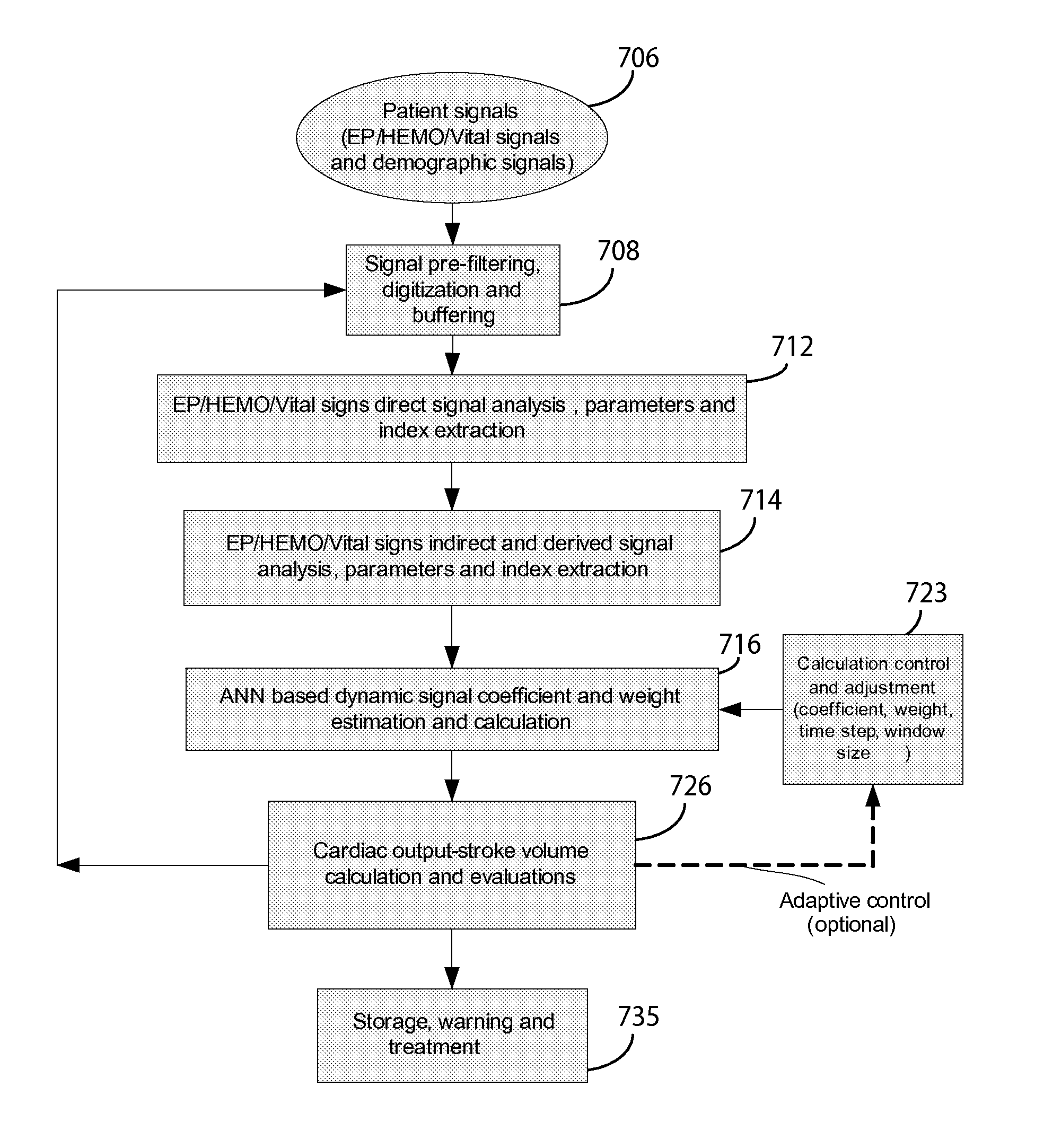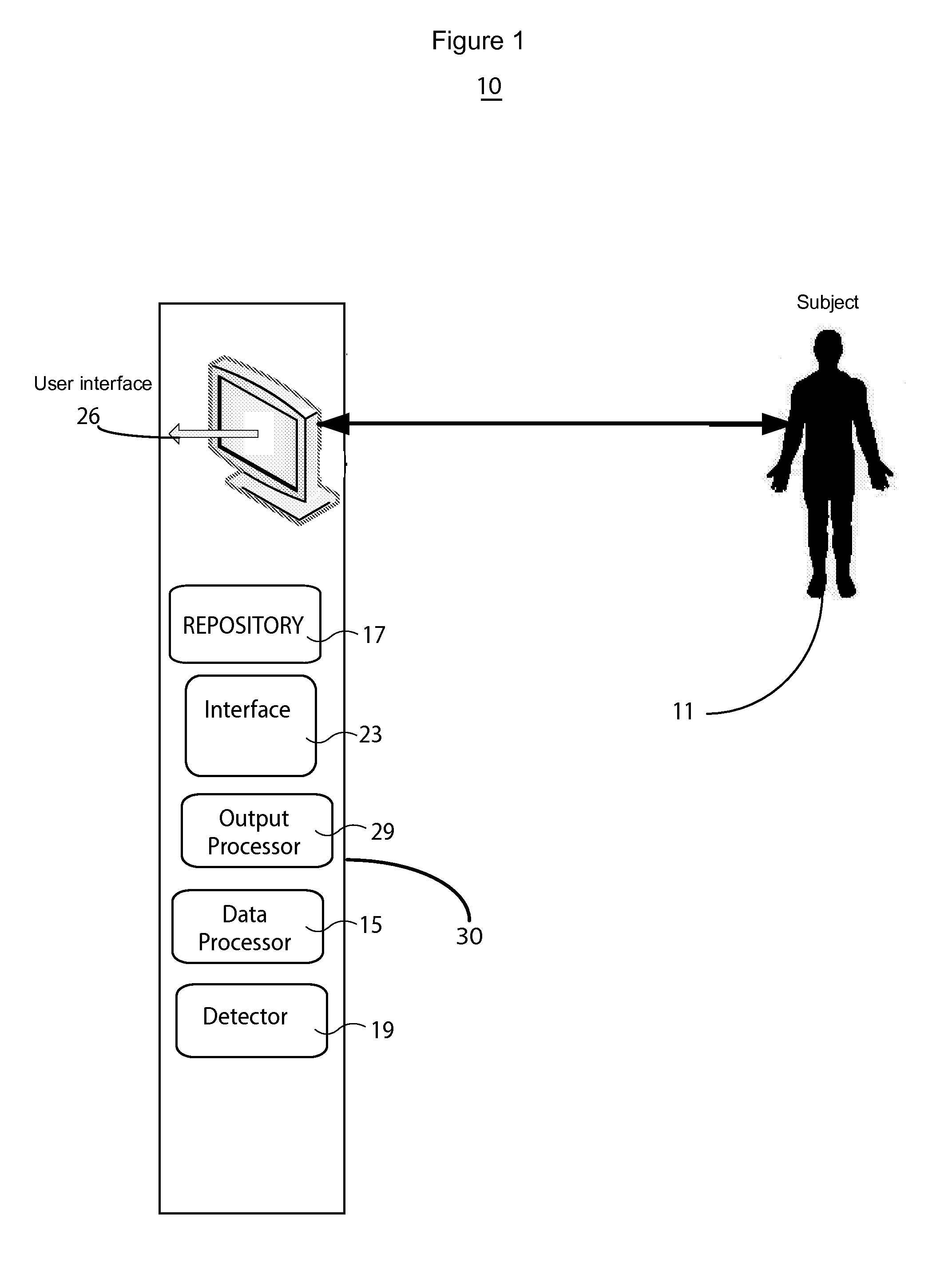System for Non-invasive Cardiac Output Determination
a cardiac output and non-invasive technology, applied in the field of cardiac output or stroke volume determination systems, can solve the problems of insufficient expertise, inability to accurately and reliably determine the cardiac status of patients, and inability to accurately measure and monitor cardiac output (co) and sv., so as to improve the accuracy of cardiac status determination of patients
- Summary
- Abstract
- Description
- Claims
- Application Information
AI Technical Summary
Benefits of technology
Problems solved by technology
Method used
Image
Examples
Embodiment Construction
[0016]A system improves accuracy of determination of patient cardiac status using non-invasive monitoring involving different kinds of patient signals (ECG, blood pressure, SPO2, for example) and patient parameters in calculating and characterizing cardiac output and stroke volume. The non-invasive method is utilized to evaluate and characterize CO / SV and CO / SV deviation, and related cardiac function parameters for diagnosing and quantifying patient health status. The system quantitatively derives CO / SV based on hemodynamic and electrophysiological patient signals. Instead of using invasive (including least or minimal) blood pressure measurements, the system uses non-invasive blood pressure (NIBP) and SPO2 oximetric signal based determination of CO. SPO2 is typically used to measure blood oxygen in capillaries, and is advantageously used by the system to quantify and characterize patient health status and identify asthma severity and predict atrial fibrillation, for example. In an e...
PUM
 Login to View More
Login to View More Abstract
Description
Claims
Application Information
 Login to View More
Login to View More - R&D
- Intellectual Property
- Life Sciences
- Materials
- Tech Scout
- Unparalleled Data Quality
- Higher Quality Content
- 60% Fewer Hallucinations
Browse by: Latest US Patents, China's latest patents, Technical Efficacy Thesaurus, Application Domain, Technology Topic, Popular Technical Reports.
© 2025 PatSnap. All rights reserved.Legal|Privacy policy|Modern Slavery Act Transparency Statement|Sitemap|About US| Contact US: help@patsnap.com



